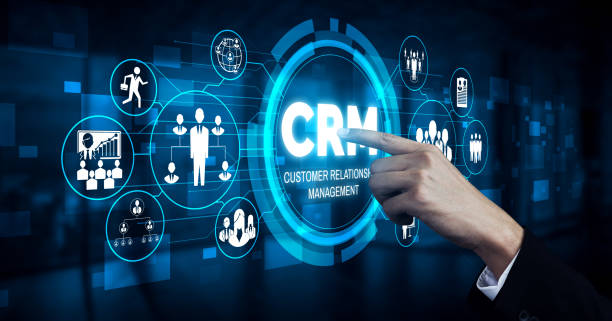
- May 20 2025
- SFI Solution Team
Orchestrating Data from Multiple CRMs into a Unified View
In the current highly interconnected business landscape, organizations frequently handle customer information across various CRM systems. However, isolated systems lead to disjointed insights. The remedy lies in consolidating data into a cohesive, comprehensive perspective.
Why Businesses Use Multiple CRMs
It’s increasingly common for companies—especially large enterprises and those that have grown through mergers or acquisitions—to use multiple Customer Relationship Management (CRM) platforms. Each platform may serve a different region, department, or function :
-
Salesforce for enterprise sales
-
HubSpot for marketing automation
-
Zoho CRM for customer service
-
Pipedrive or Freshsales for smaller business units or teams
While each tool excels in its own domain, managing customer data across multiple CRMs introduces major challenges. These include data duplication, inconsistencies, and the inability to get a 360-degree view of the customer journey.
The Business Case for a Unified CRM Data View
Creating a unified view of customer data isn’t just a technical endeavor – it’s a strategic necessity. Here’s why it matters :
1. Enhanced Customer Experience
With fragmented CRM data, teams can’t see the full customer journey. A unified view enables personalized communication, faster issue resolution, and more relevant recommendations.
2. Informed Decision-Making
Accurate and centralized customer data empowers leadership to make data-driven decisions across sales, marketing, and support.
3. Operational Efficiency
Synchronizing data from multiple systems eliminates manual data entry, reduces errors, and ensures all teams are working from the same playbook.
4. Improved Compliance
Maintaining data integrity and visibility helps companies stay compliant with regulations like GDPR and CCPA by centralizing audit logs and customer consent records.
Key Challenges in Integrating Multiple CRMs
Before you orchestrate CRM data, it’s important to understand the hurdles you may face :
-
Data Format Incompatibility : Different CRMs use varying schemas, field names, and data structures.
-
Duplicate Records : Merging customer data without duplication requires sophisticated deduplication logic.
-
Real-time Synchronization : Ensuring updates in one CRM reflect instantly across others can be technically complex.
-
Data Ownership and Governance : Multiple departments owning their CRM data can lead to turf wars and inconsistent rules.
Strategies for CRM Data Orchestration
To overcome these challenges, companies need a well-thought-out data orchestration strategy. Here’s how to do it right :
1. Perform a Comprehensive Data Audit
Begin by identifying all CRM systems in use and mapping out what types of customer data exist across platforms. Document :
-
Field names and types
-
Data sources
-
Frequency of updates
-
Data owners
2. Define a Master Data Model
Establish a unified schema or Customer Data Model (CDM) that acts as the “single source of truth.” This model standardizes fields like :
-
Name and contact info
-
Customer lifecycle stage
-
Purchase history
-
Engagement score
3. Use ETL and iPaaS Tools
Deploy ETL (Extract, Transform, Load) pipelines or Integration Platform as a Service (iPaaS) tools like :
-
MuleSoft
-
Zapier
-
Workato
-
Informatica
-
Talend
These tools automate the movement of data between CRMs, handle transformations, and ensure data consistency.
4. Implement Real-time Data Syncing
For time-sensitive operations, leverage webhooks, APIs, or event-driven architectures to enable real-time data updates across systems.
5. Ensure Data Governance and Security
Create policies for data access, quality control, and compliance. Use role-based access and encryption to protect customer information.
6. Leverage a Customer Data Platform (CDP)
A CDP can act as the aggregation layer for all customer data, ingesting and harmonizing it from multiple CRMs and enabling analytics, personalization, and segmentation.
Technologies Powering Unified CRM Views
Here are some technologies and tools that can help streamline the orchestration of CRM data :
Tool/Platform |
Functionality |
|---|---|
Segment |
Data collection and routing across tools |
Snowflake |
Centralized data warehousing |
Salesforce Data Cloud |
Real-time data unification and customer graphs |
Microsoft Power Automate |
Workflow and integration automation |
Apache NiFi |
Secure and scalable data ingestion |
Real-World Example : CRM Data Orchestration in Action
Case Study : A Global SaaS Firm
A global SaaS company operating in 20+ countries had customer data spread across Salesforce, HubSpot, and regional CRMs. Sales teams lacked visibility into marketing touchpoints, while marketing teams couldn’t track sales conversions effectively.
Solution :
-
Implemented a Customer Data Platform (CDP)
-
Created a universal customer ID for deduplication
-
Automated data syncing with Workato
-
Built dashboards in Power BI for real-time insights
Results :
-
30% improvement in lead conversion rates
-
20% faster customer response times
-
Unified view across sales, marketing, and support
Best Practices for Success
-
Start small : Begin with a pilot project integrating two CRMs before scaling.
-
Involve stakeholders : Ensure buy-in from sales, marketing, IT, and compliance teams.
-
Automate intelligently : Use AI-based deduplication and matching algorithms.
-
Monitor continuously : Set up alerts and monitoring tools to track integration health.
-
Iterate : Treat data orchestration as an ongoing process, not a one-time project.
Future Trends in CRM Data Unification
The CRM landscape is evolving. Key trends shaping the future include :
-
AI-powered Data Enrichment : Enhance customer profiles using external data sources.
-
Predictive Analytics : Use unified data to forecast behavior and churn.
-
Privacy-first Architecture : Ensure consent-based data sharing across systems.
-
Composable CRM : Move toward modular, API-first CRM systems for better flexibility.
Conclusion
Orchestrating data from multiple CRMs into a unified view isn’t just about integration – it’s about transformation. It enables businesses to become truly customer-centric, responsive, and data-driven. Whether you’re a scaling startup or a global enterprise, the path to deeper insights and better customer engagement begins with a unified data strategy.
Ready to unify your CRM data?
Let our integration experts help you create a seamless, 360-degree customer view. Contact us today +1 (900) 917-1461 or +44 (330) 043-1353 to get started.
Previous Post